#Star Fleet Technical Manual
Explore tagged Tumblr posts
Text
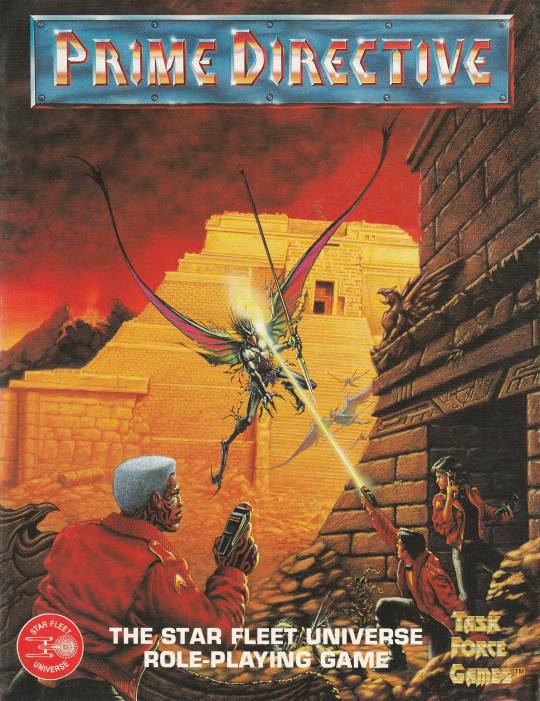
Battle at the Ziggurat -- David Menehan's cover for Prime Directive: The Star Fleet Universe Role-Playing Game, by Task Force Games, designed by Timothy D Olsen and Mark Costello (1993).
Prime Directive obviously is a Star Trek RPG, but one that does not mention "Star Trek" by name. It was published under the same license as Star Fleet Battles, granted to Stephen V Cole's Amarillo Design Bureau in the late 1970s by Franz Joseph, creator of the 1975 Star Fleet Technical Manual.
Like Star Fleet Battles, Prime Directive is focused on military actions. Player characters are members of a Federation Prime Team, an elite special forces unit assigned to the most dangerous missions.
Prime Directive describes a United Federation of Planets, phasers, and Vulcans, but you won't find Kirk or the Enterprise in this book, even in its detailed Star Fleet Universe Timeline. For that you need Star Trek: The Role Playing Game by FASA (1982-89), based directly on the original series, animated series, and first movie.
From Prime Directive:
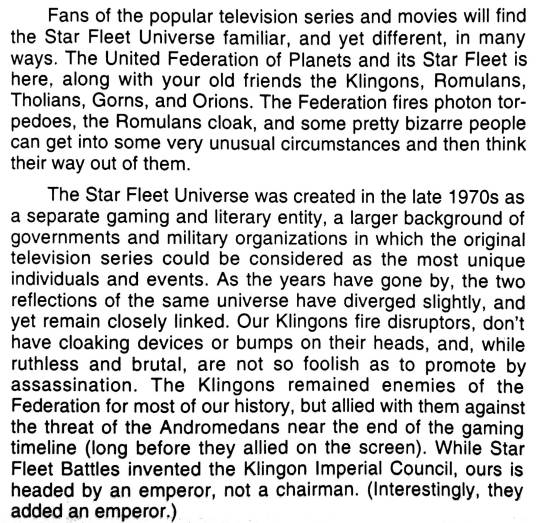
#Prime Directive#Star Trek#David Menehan#Star Trek RPG#sci fi#Star Fleet Universe#Task Force Games#Amarillo Design Bureau#Star Fleet#Star Fleet Battles#Timothy D Olsen#Mark Costello#Stephen V Cole#Franz Joseph#Franz Joseph Designs#Star Fleet Technical Manual#United Federation of Planets#ziggurat#phaser
214 notes
·
View notes
Text
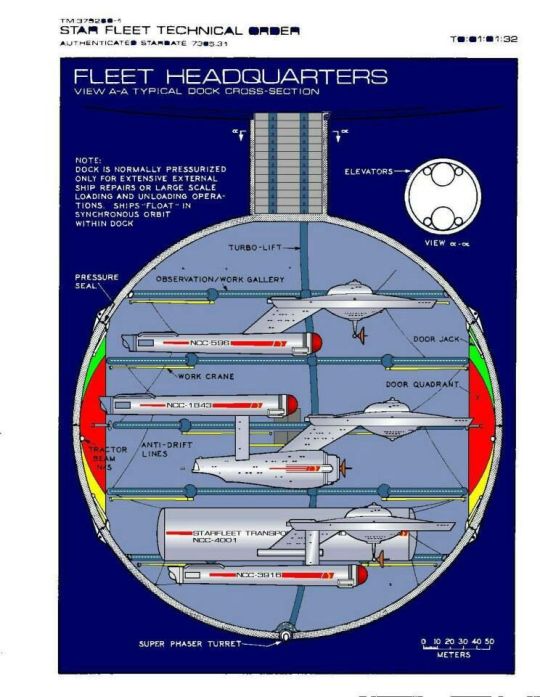
Someone, bless their heart, colored a page from the Starfleet Technical Manual by Franz Joseph.
This page depicts a portion of Starfleet Headquarters, which Joseph imagined as a large staircase in orbit over Earth. This later became, albeit with major design changes, the Spacedock facility seen in various Star Trek films and series since Star Trek lll: The Search For Spock (1984).
#Star Trek#Star Trek: The Original Series#Starfleet Technical Manual#Fleet Headquarters#U.S.S. Hermes#NCC-585#Hermes-class#scout ship#U.S.S. Constitution#NCC-1700#Constitution-class#heavy cruiser#U.S.S. Ptolemy#NCC-3801#Ptolemy-class#transport/tug#Starfleet#Starfleetstarships#starships#Franz Joseph
15 notes
·
View notes
Text
The Cardassian War was worse than you probably think.
I wrote a lot about the Maquis with every intention of posting quite a bit more about it, but then I got cold feet. Its actually been a while since I watched some of the critical Maquis episodes. In some instances, I haven't seen them since they aired. So I decided to go back and rewatch some of them. I started with TNG 7x20 "Journey's End." Where I expected a very strident lecture on the evils of forced relocation, I found something deeply nuanced and something that also reframed how I understood the Federation's conflict with the Cardassians.
If you're in a hurry, the big revelation was that, per Picard, millions of people died in the Cardassian - Federation War.
If you haven't been part of debates about what the scale of the Star Trek setting is or are more attuned to more recent series, millions may not actually seem that many people. Star Wars and 40k fans are probably squinting and wondering what all the fuss is about.
So let me provide some additional context. This is going to be mostly Doylist in nature, i.e. "meta" commentary.
Millions of people equals thousands of Galaxy-class starships. At a time when we'd seen not more than two Galaxy-class starships on screen at the same time and per the Next Generation Technical Manual (which was quasi-canon at the time, essentially given high regard by creatives working on Trek but always subject to being overruled if the needs of the story dictated) there could be as few as five Galaxy-class starships active at the time, but perhaps eleven including the initial batch of six and assuming the six framed out but not completed hulls were built to completion and subtracting poor Yamato.
Just a few seasons before, the loss of 39 ships and 11,000 personnel at Wolf 359 was considered a pretty devastating loss.
If it were strictly Starfleet and Cardassian military personnel, millions would be staggering losses representing the equivalent of thousands of starships or some mix of ships and major stations or ground forces. My gut tells me that given the way TNG seems to be a smaller scale setting than Trek would later be depicted, this wasn't intended to be solely military losses but also inclusive of and maybe even disproportionately falling upon civilians. Given that the Federation doesn't directly target civilians as a general rule, I do have some theories on how this might come about: namely by making space warfare messier than its generally presented: Star Wars and The Expanse have both done great representation of how conflicts that play out in space can still result in collateral damage to civilian stations and planetary settlements.
Notably, later series like DS9 and Discovery will do a "soft" retcon of Starfleet to include as many as 7,000 ships in the 23rd century and perhaps around 30,000 in the 24th century (citation: Ron Moore & extrapolation based on fleet size quotes) but while this isn't a hard retcon in that it doesn't override firmly declared facts and figures, it also doesn't seem like these larger numbers were ones TNG was operating with when it threw a mere 40 ships at the Borg or had Starfleet yet again being unable to avoid pulling ships out of dock mid-refit and stuffing Enterprise crew on them to catch the Romulans smuggling arms to House Duras.
Regardless of how the numbers breakdown, this was anything but analogous to a protracted series of border skirmishes and raids ala the colonial theaters of various European imperial wars, which full disclosure, was my working mental model for understanding this conflict.
So why does this matter for understanding the Maquis?
I think it matters for understanding the Federation's motives in signing what most fans and many in universe characters feel is a "bad" peace with the Cardassians. This wasn't a vanity war that super powers sometimes find themselves in where they'll fight for years in some corner of the globe that is strategically irrelevant to the imperial heartland but has somehow gained incredible psychological significance in the minds of defense planners, politicians, and yellow journalists. This is a conflict that cost the Federation quite a bit of blood for planets that are described as having been settled for at most a few decades and, at the very least, we've never really heard anyone from the Federation complain about a lack of satisfactory M-class planets.
Of course as represented by the North American Indians (TNG's term, not mine) that had settled on Dorvan V, from the perspective of the colonists, they had roots and distinctive cultural identities that they desired to have respected and felt warranted their own planets. From the Federation's perspective, these are people who have barely settled their worlds and one world should be as good as another. If you run the numbers through "the needs of the many outweigh the needs of the few" then this starts looking even more tilted towards the Federation's perspective.
Now the counter argument is the bog standard opposition to authoritarianism and violent revisionists argument. This is the argument that the moral responsibility for avoiding catastrophic loss of life is on the one who is the first to use violence to try to advance their interests, at least at the level of astropolitics. In this framing it is not the responsibility of the Federation to mollify the Cardassians by conceding on irrational fears or immoral demands.
A cynical reading of this argument might find within it the notion that the Federation should just do what it wants, as long as its consistent with the Federation's values, and if the Cardassians have a problem with it up to the point of attacking, then the Federation should fight back and not stop until it reaches Cardassia and overthrows the military junta in charge or at the very least, removes any Cardassian presence from Federation borders and denudes Cardassian capacity to strike across the border.
The idea here being that conceding to the Cardassians rewards them for their willingness to use violence to achieve their goals, which further incentivizes them to use violence, and arguably did incentivize them to use violence as evidenced by accusations of poisoning wells and damaging infrastructure to drive ex-Federation citizens off the worlds that were ceded to the Cardassian Union.
But this argument has always contained within it the implicit assumption that the Federation had the capacity to rollback Cardassian warmaking capability and to keep up pressure on the Cardassians until the Cardassians cry uncle. A war in which millions died and where the Federation is trading away planets is not one that seems to imply the Federation had the capacity to hammer the Cardassians until they relented or there was a deficit of will to fight this war to the hilt, recognizing that pushing the war all the way to the orbit of Cardassia Prime would result in Union space being ungoverned and insecure until the infrastructure and ships were replaced.
Anyone who has watched the outcomes of the Global War on Terror or the various civil wars and revolutions that have happened in recent years should be very cognizant that a lack of order and security often results in problems being exported to adjacent regions. Problems meaning traumatized and impoverished refugees seeking safety and sustenance in places ill equipped to provide for them materially and often with some or a lot of mutual incoherence and mistrust happening at the cultural level as norms clash. Problems also meaning unaccounted for military equipment finding its way into the hands of revolutionaries, terrorists, and pirates who pursue their own goals and survival needs through the use of weapons on anyone who has something worth taking.
The United States did not kill a million or more people in Iraq, Afghanistan, and other MENA region countries through the use of weapons from 2001 to date. Iraq from 1991 to 2001 didn't have a million excess deaths* because of bombs detonating in people's homes, those deaths resulted from damage to infrastructure and internal supply chains because civilization is actually rather fragile and even people we regard as "less developed" are not meaningfully closer to nature and more resilient than we in the WEIRD category. If anything they exist in a more delicate state because they are often living on more marginal and stressed land with infrastructure that lacks redundancies or substantial state capacity to move people and resources around quickly to address sudden need.
*It should be noted that while these figures are widely quoted, the methodology has been questioned. I would encourage readers who want to get their historical facts correct to examine the evidence and decide whether Iraq sanctions are something one wants to use in a context other than describing the potential consequences of a fictional war.
When considering how to deal with Russia and its invasion of Ukraine, there are moral debates about how hard to press the civilian economy. Namely because so much of the infrastructure and daily necessities of life in modern countries count as "dual use." As in there are legitimate civilian uses that it doesn't seem productive to deny people: transistors are essential for access to information - both state controlled but also outside channels, and operate everything from thermostats to live saving medical equipment. The distinction between a transistor appropriate for running an insulin pump and one for a hypersonic missile is increasingly blurry.
An analogy could easily be drawn to isolinear chips and replicators. We in the fandom often assume that the Federation's ability to be precise in its application of lethal violence is practically omniscient and omnipotent, and that with its august technology, it has been liberated from having to make hard decisions. Yet if the Federation wants to destroy the warmaking capability of the Cardassians, how "deep" into the Cardassian infrastructure does it need to go?
Can you imagine Captain Picard sleeping well at night after calling a senior staff meeting to debate the legitimacy of striking a fusion reactor in a dense urban area that has been unplugged from the civilian grid and hooked up to an industrial replicator pumping out photon torpedo thrusters?
Further, the moral and political science assumptions of the Federation seem to rule out the idea that Cardassian civilians suffering and dying is an appropriate form of justice for Federation lives nor does suffering seem to predictably and reliably lead to revolution. Historical evidence is at best mixed and perhaps even damning. Try wrapping your head around the idea that Russian forces continued to fight their foreign enemies in WW1 at the same time as different Russian formations were fighting each other during the civil war that broke out as a direct consequence of World War 1. In short, while the war had certainly radicalized much of the public, there was still a lot of anger and blame directed to those who had been killing Russians before Russians were killing Russians.
So what is the Federation to do?
Keep fighting a war it probably wasn't technically losing but definitely didn't seem to be winning?
And perhaps the Federation couldn't win without paying a cost in both Federation and Cardassian lives, many of whom might be noncombatants, that was unpalatable?
What was it supposed to do after Wolf 359?
Postscript:
A bit more about the plot of the episode itself. "Journey's End" is probably one of the best TNG moral dilemma episodes. There are critiques to be made obviously. That the Indigenous people depicted seem to be a bit generic to the uneducated eye and do not claim a specific tribal / national identity feels weird at the end of 2024, but it also provokes an interesting discussion about the degree to which there isn't already a lot of syncretism among peoples who have experienced massive depopulation and loss of political agency, whether through intentional genocides, loss of territory, or disease. Its not hard to imagine this "North American Indian" identity found on Dorvan V being a syncretic identity that emerged in the 2100s once interstellar colonization really took off. Its strongly implied to be a "fresh start" movement that was itself controversial and many indigenous North Americas opted not to join them; but its membership could be plausibly drawn from many cultural identities.
However, the moral dilemma at the heart of the episode is handled with exquisite care and steadfastly refuses to make anyone objectively the bad guy. Every Federation character, even hardline consequentialist Admiral Nechayev, is respectful to the people of Dorvan V and mindful of their historical trauma even as it recognizes that the Federation's own interests are largely incompatible with respecting their demands.
Even Gul Evek, the named Cardassian leader of the show, relents after an impassioned plea from Picard. Evek admits to losing two out of three sons in the war and speculates that if the Dorvan V inhabitants leave the Cardassians alone, they will be left alone. Evek was convincing at least to this member of the audience. The framing felt hopeful rather than like everyone was being asked to swallow a Targ dung sandwich.
In checking to make sure I spelled his name correctly, I've become aware that Evek becomes a recurring character and I'm intrigued to see if there are clues to be found as to whether you could argue that he was lying or that events took on a life of their own and Evek was simply proven wrong. Its possible that Dorvan V was largely spared but the Obsidian Order or other elements of the Cardassian government decided to act in places it thought the Federation wouldn't be paying as close attention and the radicalization of the Maquis in turn radicalized Evek.
After all, since that the Cardassian Union was in effect waging a proxy war in the Demilitarized Zone, it would take little to convince some Cardassians that a guerilla movement with ex-Starfleet in almost all command roles and using Federation hardware represented a Federation proxy war with top level support. Which would in turn require the Federation to at least make some efforts at combating the Maquis in order to sell the Cardassians on the idea that the Maquis are not a plausibly deniable arm of Starfleet Intelligence.
But the Maquis are obviously are going to do what they need to do to defend their worlds, whether its their actual colonies or because they object to Starfleet sitting on its hands in the face of reports of atrocities.
In retrospect, for an era that was just testing the waters for multi-season arcs, this is such smart and tragic world building. Unlike say, the plot to destroy Qonos in Discovery or the anti-Changeling bioweapon being the Chekov's gun necessary to resolve the Dominion War, very little about the Maquis arc feels contrived and much more well supported by the world building around it.
#star trek#star trek ethics#astropolitics#maquis#star trek analysis#star trek politics#fandom commentary#michael eddington#Star Trek The Next Generation#st tng#star trek tng#tng#TNG 7x20#Journey's End#cardassian war#cardassians#the trolley problem
21 notes
·
View notes
Text

Star Trek fans are hardcore. The U.S.S. Akula from the unlicensed technical manual Ships of the Star Fleet, Volume 2.
183 notes
·
View notes
Text
Bakers Dozen: Canon Ships I want to see in Star Trek Online
I love Star Trek Online, and one of my favorite features is the sheer number of ships you can fly from in the shows. From the 22nd century to the 32nd century, there are literally hundreds of choices. But there are still many canon starships I’ve have not had the chance to make poor finacial decisions for. So what better choice for the first round of Baker’s Dozen.
Here’s 12 canon Starships (and one honorable mention) I want in Star Trek Online.
Lets start with the Honorable mention:
The Consitution III Class

Picard Season III’s hero ship, the affectionatly dubbed NeoConnie bears the distiction of being both the Titan A and Enteprise G. Those who read my Enteprise F headcanon also encountered the USS Riptide, an early command of my Captain. Why then is she only an honorable mention? Because the developers have already announced they are working on her. *sighs* shes gonna be a promo ships isn’t she?
1. The Federation Class

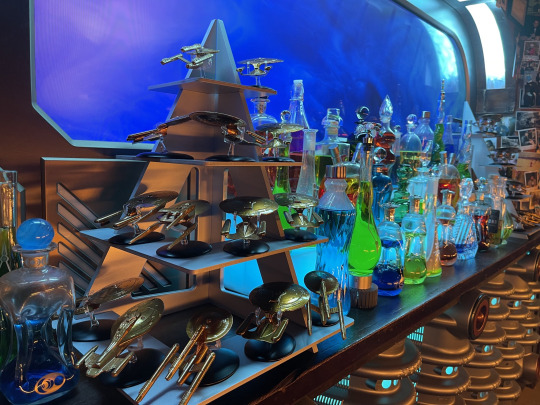
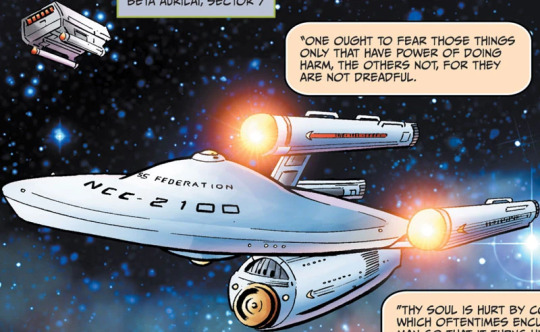
First appearing in Franz Joseph's Technical Manual, this design first appeared on screen as background display’s in The Wrath of Khan and The Search for Spock. More recently, Star Trek Picard saw model’s of this legendary starship in Ten Forward, alonside ships such as voyager and Enterprise D. Considering my flagship is a Gal-X, this would be a wonderful predecessor. Plus TOS ships are always welsome
2. The Romulan Bomber

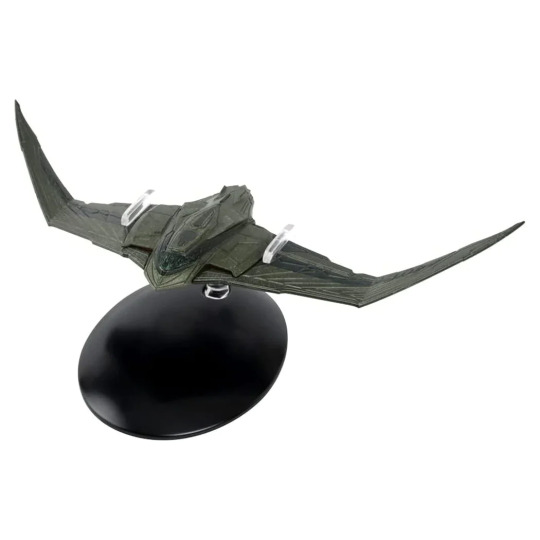
In Picard Season 1 we were introduced to the Romulan ships with this beauty. An elegant design with blade like wings, it instantly caught my heart. Instantly recogniable as a Romulan vessel while being a new and distinctive shape, it was a perfect evolution of what came before.More Romulan rep is always appreciated. C-Store? Please?
3.The Niagra Class
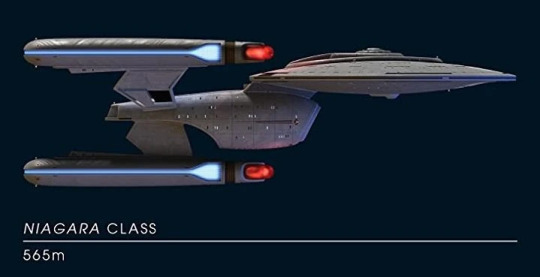

One of my favorite ships in all of Star Trek, the Niagra class is a three nacelled cruiser blending elements of the ambassador and galaxy lines. Perhaps uniquely, the third nacelle is underslung. She has only appeared as wreckage, most notably the USS Princeton, lost at the Battle of Wolf 359, nut several other STO ships have the same origin. The Cheyenne and New Orleans both come from the same boneyard fleet. Also a updated Princeton Class to match the Lafeyette and Andromeda would be gorgeous.
4. Lower Decks BackGround Ship
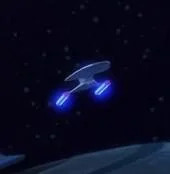
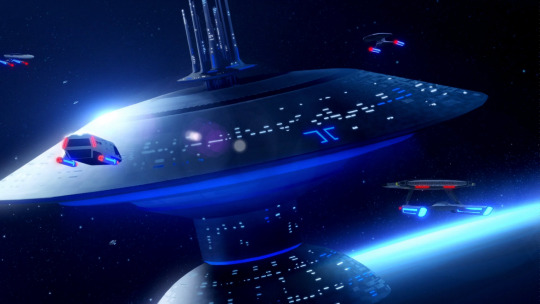
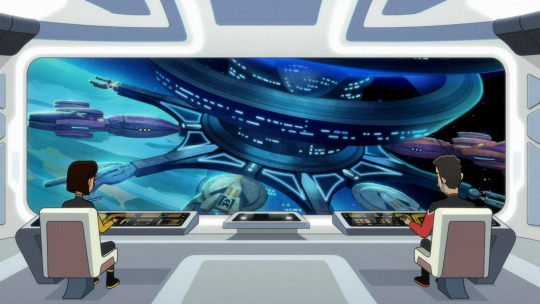
This unamed Ship class from Lower Decks is beggin for someone to realize her full potential, maybe a desendant of the Crossfeild Class? I loved her from the moment I saw her, and desperatly want to know more.
5.The Yeager Class
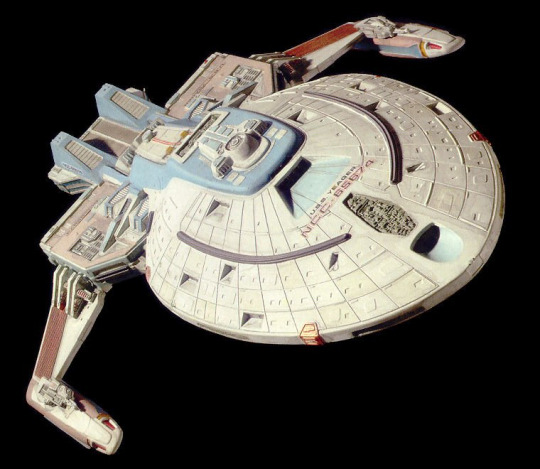
No this is not a meme, its one of my favorite background ships. She has an isane amount of screentime, as shes in stock footage used alot in DS9. She served throughout the Dominion War. Why the weird hull? In my headcanon, she was built as a proof of concept for a tactical sister class to the Intrepid. (This will eventually be a full headcanon post). Once she proved succesful (for what she was), the go ahead was given to desgin a production version with a properly designed secondary hull. The outbreak of hostilities saw the Yeagar pushed into service, as she was a fully combat capable vessel. Also, the amazing Pundus already designed the 2412 variant.
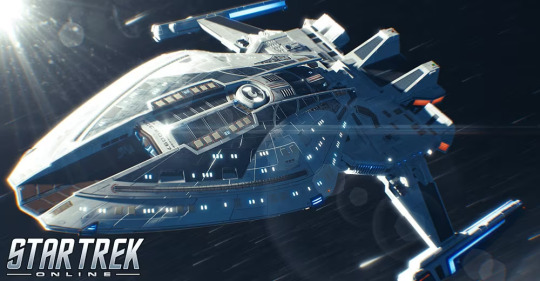
6.The Mayflower class
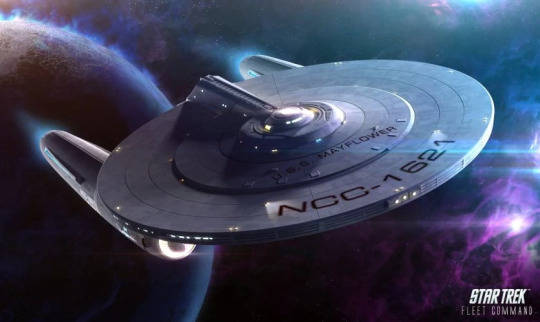
A ship from the Kelvin timeline, the namesake of this ADORABLE starship was lost at the Battle of Vulcan in 2258. We need more Kelvin ships, and it is a crime this sweet gal isn’t in game already.
7.The Duderstadt class
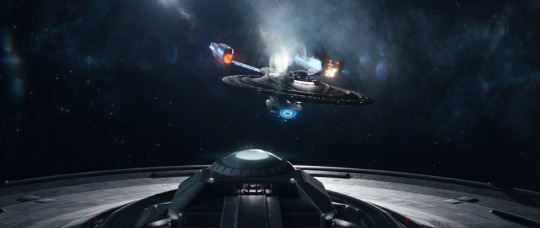
You knew. I knew. The Pakleds knew. A modified Bill Krause design, much like the Titan/Enterprise herself, the USS Intrepid made a daring, intimidating, and awe inpiring debut in Star Trek Picard Season 3. Its rare to see a new ship so univserally loved today. But she deserves it. The only bad thing is she’s prolly gonna be the lockbox ships.
8.Jupp Class
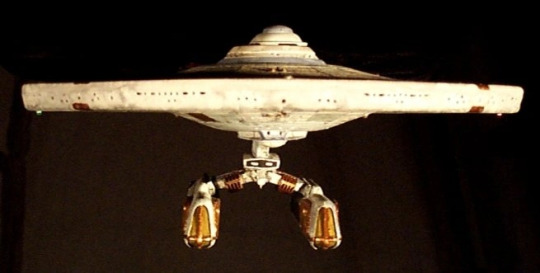

This Gal appears waaayyy in the back of a DS9 episode according to the art deparment. Good enough for me. Shes a clear member of the refit family, and is an obvious choice to add to the Miranda/Clarke/Light Cruiser Frame. Always could use TMP rep
9. The Intrepid Type

Really? This isn’t in game already? How?!? Please? Enterpise Era Rep? I haven’t even watched Enterprise yet (oops) and I know this ship!
10.Springfeild Class
Another ship lost at Wolf 359, common, pretty small science ship? Complete the fleet? It could literally be the Chekov class.
11.Curry Class
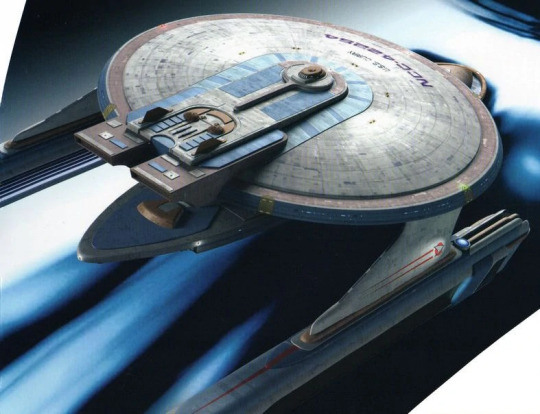
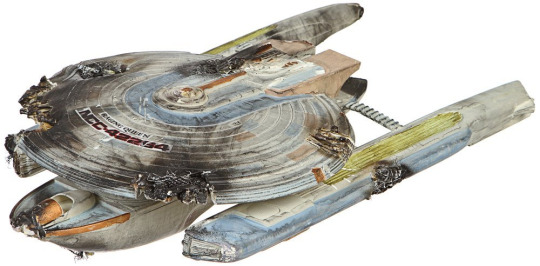
This class appears in Deep Space 9, and features tow variants with different Nacelles arrangements. TMP Carrier anyone?
12. Block 2 Constitution Class (Kelvin Timeline)
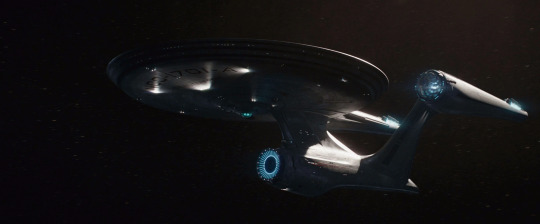
I just want to talk. Its been 7 years since this beautiful ships arrived, and theres no offical models, and no STO Release...WWWHWHHHHYYYYY????
I love this ship. Its my favorite lettered Enteprise. I need her. Shes the only canon Enterprise besides the G not in game, and they’re working on the G. Best design in the Kelvin Timeline, and we don’t have her. I would totally spend stupid money on her, but I can’t.
Please STO, show mercy.
Hope yall enjoyed this first Baker’s Dozen, see you next week!
#star trek#star trek online#Alternate History#Hazel's Baker's Dozen#Consitution III Class#Federation Class#Curry Class#Yeager Class#Niagra Class#Springfeild Class#Constituion Class (Kelvin Timeline)#Enterprise G#Titan A#Enteprrise A#Intrepid Type#Jupp Class#Duderstadt class#Mayflower class#romulan bomber#star trek the next generation#star trek picard#star trek deep space 9#star trek lower decks#star trek kelvin timeline
18 notes
·
View notes
Text
Andromeda has logical consequences for it's technology. Artifical gravity can make the ship lighter to the point it can run like a space fighter, battles are typically done in distances measured in Light Seconds.
Babylon 5 combines the very hard Earth Alliance, with the much softer other races. Earth Alliance has to have spinning sections to simulate gravity, while the other races actually have artificial gravity. Largely suffers from the writers didn't read the tech manual.
Battlestar Galactica tried to create a very realistic idea of space, but fell into a bunch of current-year cliches, while also not dealing with the fact that artificial gravity is a super weapon. The Cylon Base Stars are a very realistic idea of what an AI might create for space ship design, (cripplingly specialized to the most effective form of warfare), while the Galactica was purposefully designed to be a barely functional hunk of junk that lets you feel the very real risks of empty space that surround you.
Haven't played Eve online, but it lets you customize ships to a ridiculous degree.
Homeworld focuses on massive fleet battles, but also more strategic things, so you fleet is filled with asteroid miners and whatnot.
Gundam tends to focus on Gundams, naturally, but still has some incredibly cool, and well thought out space ships.
Mass Effect takes the hardest science fiction that still allows planetary romance, and throws it into a lovecraftian horror. So you have realistic dreadnoughts fighting space cuddlefish from the dark space beyond the galactic rim, that have voices that crawl into your mind, and have the abyss stare at you from every shadow.
Stargate has really cool old technology, with relatively hard modern technology.
Star Trek does a fantastic job of progressing the ships over the years with intricate, loving detail. And then has writers that flat out ignore the technical details.
Star Wars combines things like artificial gravity and space Confucianism with arguably the most rules-based space travel ever created. Original Trilogy + Prequel Trilogy + Expanded Universe, of course
Wing Commander is one of the oldest and most venerated space sims... short of Star Wars, but still wonderfully dedicated.
40k really depends on the factions. The Imperium is so hard to the point that logistically issues are prevalent in every story. While the ships SEEM ridiculous, they actually operate as a ship of that size would, and justify the size by the fact they can't use anything more than the most basic computer systems to control it. Others factions tend to fall much more into the space magic category.
2 notes
·
View notes
Text
Dispossessed Demon: Chapter 4
'Mechworker, 'Mechrobber
In Tikograd’s industrial hellscape, where smog choked the stars and factory klaxons wailed like lost souls, Viktor Starkov clawed his way into existence. At seventeen, he was a lean, strong, bitter youth with calloused hands and sharp, watchful eyes that trusted no one. Secondary school behind him, he landed a job at the Earthwerks BattleMech factory, sweeping metal shavings and tightening bolts on the Vindicator line. It was grueling, dangerous work, but Viktor saw it for what it was: a ladder to climb.
Thanks to Franco Liao’s hereditary incentives and a tax rate slashed from 30% to 10% for arms workers, Viktor earned 15,000 Liao bills a year—double Tikograd’s average. Yet wages alone didn’t fuel his rise. Tireless and cunning, he devoured technical manuals and volunteered for emergency drills, his ambition a blade honed on resentment. By his second year, he’d traded backbreaking labor for an industrial exoskeleton, his uncanny dexterity manipulating ten-ton pallets earning a raise and a nod from the Commonality caste. But Viktor wanted more than a technician’s badge—he wanted out.
The fire came without warning. A Davion sabotage cell struck the factory in 2993, during the Third Succession War’s bitter grind. Explosions tore through the Vindicator line, and as smoke choked the air and workers fled, Viktor stayed. Strapped into his exoskeleton, he braved the flames, tearing through rubble to drag wounded from the chaos. Among them was Petrov, a grizzled production manager with a smile like a rusted blade. Bloodied but alive, Petrov saw a spark in the boy—a courage he could mold.
Petrov became Viktor’s mentor, a second father who pinned a House Citation for Meritorious Civil Service on his chest, a civilian honor Viktor would later wear below war medals, its gleam a reminder of the day he became more than a laborer. But Petrov’s lessons ran deeper than valor. “There are other ways to serve the State,” he whispered one night, guiding Viktor’s exoskeleton to a sealed warehouse under false orders. There, they offloaded salvaged Vindicator parts—actuators, myomer bundles—written off as lost in the fire. From that moment, Viktor was no longer just a mechanic. He was a conspirator.
Under Petrov’s wing, Viktor became a cog in a black-market machine, funneling stolen parts to MechWarriors hoarding private reserves against Dispossession. His discretion and cleverness earned trust, but it was his ambition that reshaped their game. In the Capellan planned economy, factory quotas were scrutinized, success overstated. Viktor proposed a bolder scheme: underreport production, pleasing directors with modest gains while skimming the surplus for resale—not just to lone MechWarriors, but to regiment logisticians bypassing military channels. The profits were staggering, yet Viktor claimed only modest rewards, knowing Petrov’s clout and contacts were the operation’s backbone. His true prize was a promotion to technical supervisor in the Commonality, with security credentials to match.
By twenty, Viktor had lifted himself and his sister, Vera, from poverty to a precarious middle-class life. His 15,000-Liao-bill salary, bolstered by free housing and factory perks, bought clean sheets and a small apartment where Veracould study. His charm drew fleeting lovers—barmaids, factory girls—but his heart burned for ambition alone. Still, he learned. He studied Vindicator repairs, logged hours in simulation pods, and traded favors for cockpit time. With Petrov’s endorsement, he advanced to testing newly assembled ‘Mechs, walking them from the assembly line to the yard, feeling their weight, their gait, their power.
He never spoke it aloud, but every step in a Vindicator’s cockpit sharpened his dream: to steal one of these machines and vanish from Capellan space. As Tikograd’s skyline loomed beyond the factory gates, Viktor knew the path to freedom ran through betrayal—and he was ready to walk it.
ROM Annotation – Adept Stirlitz Psychological Analysis RESTRICTED // FILE 3-2993-MR//V.S. Subject enters a liminal phase between servitude and ambition. Acceptance of blue-collar technical work appears sincere, not manipulative. However, subject's rejection of the Philotechnique Institute signals early strategic independence and long-term vision: he wants a BattleMech, not a technician’s toolbox. Subject displays strong sibling loyalty—potential emotional anchor and exploitable weakness. Initial interface with black-market actors in this period marks the start of subject’s “double existence” motif: soldier and shadow, loyalist and thief.
0 notes
Text
How to Prepare for Airline Pilot Interviews

Becoming an airline pilot is a dream for many, but the journey doesn’t stop once you accumulate flight hours and certifications. Pilot interviews are rigorous and require thorough preparation. Here’s how you can prepare to ace a pilot interview and increase your chances of success.
Prepare for Airline Pilot Interviews
1. Know the Airline and Its Operations
It's important to learn about the airline you are interviewing with before you enter any interview. Recognize their corporate culture, values, routes, and fleet. Look at recent developments, such as mergers, expansions, or changes in leadership. Your passion and dedication to working for the airline will be evident if you can demonstrate your familiarity with it.
2. Review Your Flight Experience
Expect questions about your flight history, training, and any challenges you’ve faced as a pilot. Be prepared to discuss your hours of flight time, the aircraft you’ve flown, and any experiences that highlight your skills as a pilot. The interviewers will want to see how well you can handle various situations, such as unexpected weather, mechanical issues, or emergencies.
3. Brush Up on Technical Knowledge
Interviews with airline pilots frequently include a technical section. Be ready for inquiries about navigation, flight planning, emergency protocols, aerodynamics, and aircraft systems. Additionally, you should be prepared to talk about complicated subjects like weight and balance calculations, airspace classifications, and aviation rules. You can boost your confidence by going over previous tests and studying the most recent aviation manuals.
4. Practice Behavioral Interview Questions
In addition to technical knowledge, behavioral questions are designed to assess your soft skills and personality. These questions often begin with phrases like “Tell me about a time when...” and focus on situations where you had to show leadership, teamwork, or problem-solving abilities. Practice answering these questions with the STAR method (Situation, Task, Action, Result) to provide structured, clear responses.
5. Demonstrate Your Professionalism and Communication Skills
As a pilot, clear communication is essential. Ensure you speak confidently and professionally, maintaining a calm demeanor throughout the interview. Your ability to communicate effectively with air traffic control, crew members, and passengers will be scrutinized, so it’s important to express yourself clearly and with authority.
6. Physical and Mental Readiness
The life of a pilot can be demanding, both physically and mentally. Be prepared for a medical examination and psychological evaluation. Ensure you are in optimal health and have a positive mental attitude, as these qualities are essential for the high-pressure environment you’ll encounter as an airline pilot.
0 notes
Text
Accurate FX Signals
Unlocking the Potential of Accurate FX Signals: Navigating the Currency Markets with Precision In the bustling realm of foreign exchange (FX) trading, where fortunes are made and lost in the blink of an eye, the significance of accurate signals cannot be overstated. These signals, akin to guiding stars in the vast expanse of the currency markets, offer traders invaluable insights, helping them navigate the complexities and seize lucrative opportunities with confidence and precision. At its essence, FX trading revolves around the buying and selling of currencies, with traders seeking to profit from fluctuations in exchange rates. However, in a landscape characterized by rapid shifts and intense competition, the ability to decipher market trends and make informed decisions is paramount. This is where accurate FX signals come into play, serving as beacons of clarity amid the often murky waters of speculation. But what exactly are FX signals? In simple terms, they are indicators or notifications that highlight potentially profitable trading opportunities based on thorough analysis of market data, technical indicators, and sometimes even fundamental factors. These signals can be generated through various methods, including manual analysis by seasoned traders, algorithmic algorithms, or a combination of both. The true value of accurate FX signals lies in their ability to cut through the noise and provide actionable insights in real-time. By leveraging advanced analytical tools and techniques, traders can identify trends, detect price patterns, and anticipate market movements with a high degree of accuracy. This not only helps minimize risks but also maximizes returns, allowing traders to capitalize on fleeting opportunities before they vanish into the ether. Moreover, accurate FX signals empower traders to make informed decisions based on objective data rather than emotions or gut instincts. In an arena where impulsive actions can lead to catastrophic losses, having a reliable signal provider can be the difference between success and failure. By following the guidance of trusted signals, traders can maintain discipline, stick to their strategies, and avoid falling prey to irrational behavior driven by fear or greed. Of course, it's essential to exercise caution and discernment when choosing an FX signal provider. With countless services vying for attention in the market, not all signals are created equal. Some may lack the necessary rigor or transparency, leading unsuspecting traders astray with false promises of guaranteed profits. Therefore, it's crucial to conduct thorough research, assess the track record and reputation of signal providers, and seek recommendations from trusted sources within the trading community. In addition, it's worth noting that while accurate FX signals can significantly enhance trading performance, they are not infallible. The markets are inherently unpredictable, influenced by a myriad of factors ranging from geopolitical events to economic indicators. As such, traders should always exercise prudent risk management, diversify their portfolios, and never invest more than they can afford to lose, regardless of how promising a signal may seem. In conclusion, accurate FX signals represent a powerful tool in the arsenal of any trader seeking success in the dynamic world of currency trading. By harnessing the insights provided by these signals, traders can navigate the markets with confidence, capitalize on opportunities, and ultimately achieve their financial goals. However, it's essential to approach signal trading with caution, skepticism, and a healthy dose of realism, recognizing that while signals can guide us, it is ultimately our own knowledge, skills, and judgment that determine our success in the end.
0 notes
Text
1976. Star Trek Fanzines from a Star Trek convention in Oakland, CA. Several original cast members in attendance; I don't recall anyone specific but Mark Lenard.
I picked up a number of 'zines, but the only title I remember is Dreadnought Explorations (which put the TOS crew on one of the Dreadnought-class ships from the Franz Joseph Designs Star Fleet Technical Manual).
17K notes
·
View notes
Text
Kzinti and Star Trek
You don't see many Kzinti in Star Trek, and there's a very good reason for that: They're not actually Star Trek aliens, but a borrow from Larry Niven's Known Space series of books. And so Paramount don't actually own them. "The Slaver Weapon" episode of The Animated Series is an adaptation of Larry's "The Soft Weapon"
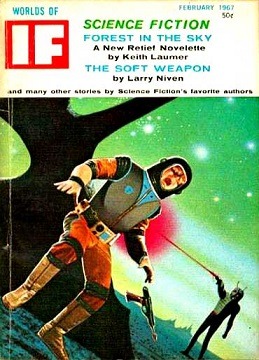
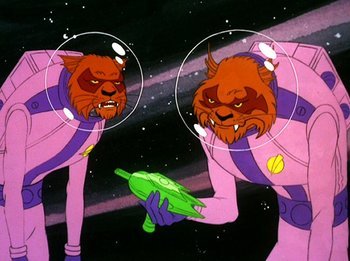
TAS' "Slaver Weapon" brought lots of Known Space lore into Trek. 4 Man-Kzin Wars were fought prior to the invention of faster-than-light travel, which really doesn't work in Trek where First Contact established, well, first contact and it was between humans and Vulcans after the first warp flight.
We also saw a Slaver, which have a rich backstory in Known Space where they're known as the Thrint and once ruled over the galaxy with their telepathy.

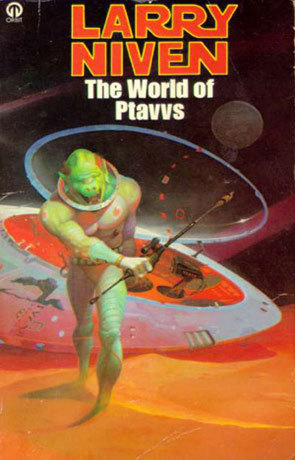
Some of Niven's backstory fits into Trek but other parts don't.
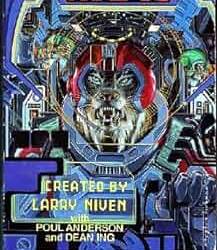
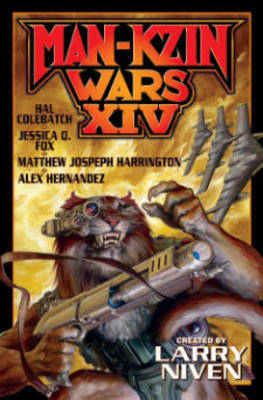
The Man-Kzin Wars don't. That being said, there have been attempts to bring Kzin back into Trek and several references to them. The Next Gen novel "The Captain's Honor" features the M'dok in the B-plot, a feline species who fought 2 wars with humanity one before the founding of the Federation and one after... sound vaguely familiar? They were originally the Kzin, and had name and details changed to avoid potential legal issues.
The Kzin exist in the Star Fleet Battles tabletop gaming universe (which is like a Trek splinter universe, licensed from TOS, TAS and the Star Fleet Technical Manual but nothing else), but they lack the distinctive bat ears.

Starfleet Command, the videogame adaptation of Star Fleet Battles swaps the Kzinti for the Mirak, again to avoid copyright issues.

But then came Star Trek Picard, where in season one Riker talks about an issue with the Kzinti (apparently permission was sought from Larry Niven and given for the mention) and then Lower Decks gave us Taylor, who is clearly Kzinti but likely will just never have anyone say it out loud just to be on the safe side
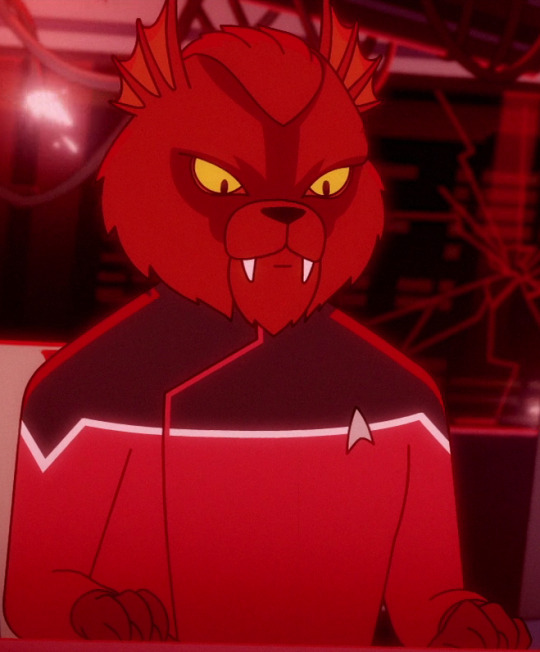
Oh, and the 1980 Star Trek Maps were cheeky and called them the K'zinti and hoped the apostrophe would make everything okay.
There have been attempts to bring the Kzinti back to Trek, like a planned Enterprise season 5 episode called "Kilkenny Cats" which was almost resurrected as a New Voyages fan film project. Here's the poster, where they'd replaced the Kzinti with the Kytharri (another Kzin-expy from the DS9 "Prophecy and Change" anthology
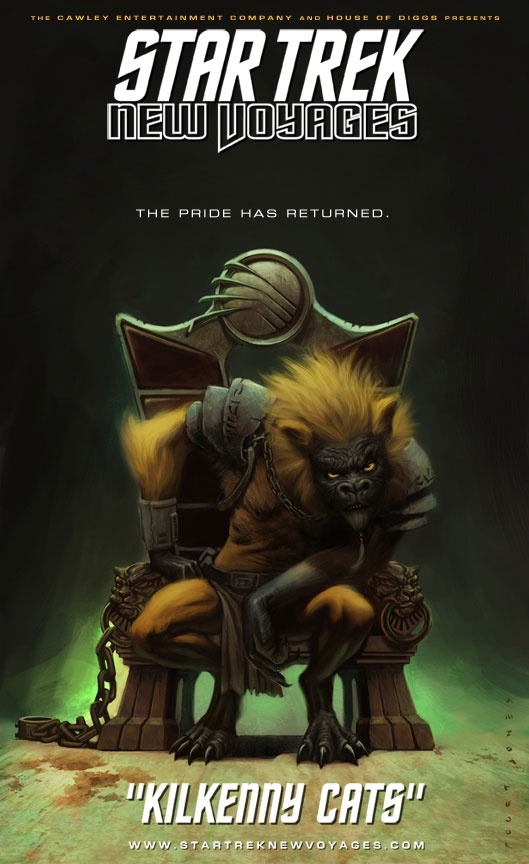
The "Kilkenny Cats" story read somewhat like a retread of DS9's "Armageddon Game". There were also attempts to get an animated Star Trek movie made called Lions of the Night, involving Sulu and the Enterprise-B dealing with a Kzinti invasion.
Oh oh, and read Ringworld. It's fantastic. And makes one wonder what the Kzin world is like in the Trek world... because they're unable to stop themselves launching violent wars on neighbours which they have no hope of winning, their world is essentially occupied by humans and that's very un-Trek (which of course makes it 10x more fascinating) indeed. How would Starfleet and the Federation deal with such a threat?
#star trek#known space#larry niven#kzinti#lower decks#star trek enterprise#ringworld#the animated series#star trek tas#deep lore#deep dive#star trek novels#star trek novelverse
109 notes
·
View notes
Text
Bakers Dozen: Liscensed Ships I want in Star Trek Online
Welcome back to Bakers Dozen! This time we return to Star Trek Online ships, but instead of canon, its liscensed. Simply put, 12 ships (and one honorable mention) I want in STO, that aren’t canon, but appeared in an offical Star Trek Product (Books, Comics, Games, Ect.)
1.Premonition Class

Hailing from Star Trek Armada, The U.S.S. Premonition went back in time to warn the Enterprise E of an impeding borg invasion. I never had the full game, but I played the demo countless times. Just look at her. She aleady looks like an Sto ship. One of the most iconic Star Trek Video games ships, I think she would be a great ship to appear in the current arc time/multiverse themed arc.
2.Yorktown Class (ENT Era)

Long before Captain Seven of Nine commanded the enterprise, and even long before STO. There was a Yorktown Class Starship in Star Trek Legacy. Star Trek legacy was the first star trek game I owned, and the Yorktown was a favorite of mine. The battleship to the NX Cruiser, the Yorktown was a powerhouse in the 22nd century. She’d need a new name, as the current Enterprise in STO is a very different Yorktown Class, but we could always use more Enterprise era ships.
3.Belknap/Ascension Class
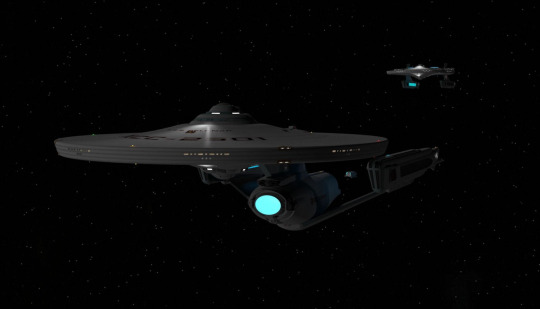

Quite possibly my favorite TMP Era design (yes including the refit) The Belknap from Ships of the Star Fleet Vol. 1 is the Constitution Refit’s smaller agile cousin. Stripped of diplomatic suites and scientic labratories, the Belknap posseses the Constituion’s firepower in a more compact and agile frame.
A “Dreadnoght” version exists, the Ascension class, but it’s literally a Belnap with the third nacelle of a Federation classs refit, maybe to give her longer warp sustainability?
4.Andor Class
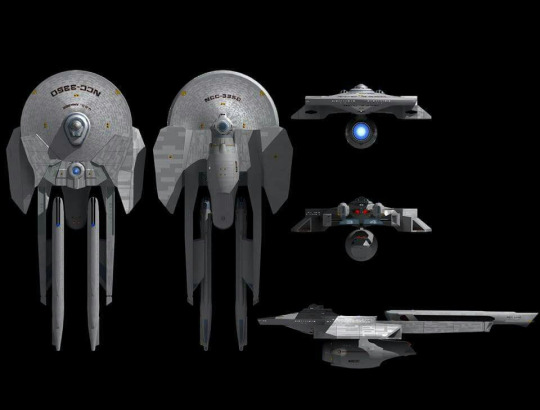
This TMP era missle cruiser was introduced with FASA, and I loved this odd ball. I could see her functioning as a TMP era defiant, a small ship darting in with heavy torpedo fire. Also more TMP is always a win
5.Archer Class
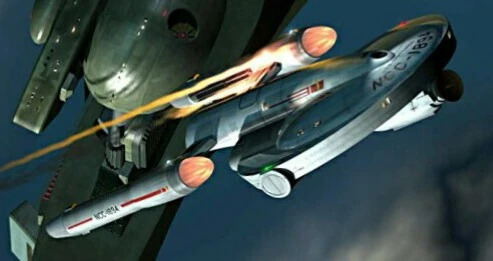
Apperaing in the Star Trek Vangaurd Novels, this was a tiny tos scout ship, with only a crew of 14, and still didn’t have enough room for personal bunks. Incredibly fast and agile, she was too small for turbolifts, instead only having ladders. Pls let me 1v1 a cube with this smol ship. Also TOS Ships are always a win.
6. Aegis Class

The U.S.S. Aegis is the hero ship of Star Trek Bridge Crew, and my god what a gorgeous ship. STO needs more Kelvin ships, and what better one than a proper Hero ship that has her own games, and looks this good?
7.Romulan Warbird, Unknown Class

This Stormbird (Romulan D7) esk dreadnought appeared in the DC Star Trek Comics in the 80s. Decades later, younger me would find the comics as a kid, and fall in love with this oship. Romulan TMP Warbird? Sign me up! Pls?
Also this comic has this awesome shot

8.USS Dorothy Garrod

From the IDW Dicovery Comic, this Federation science vessel looks cool. Thats it. Thats all I know. Discovery rep is always a win.
9.D-18 Gull Class

A Klingon ship from Fasa, this is a troop transport. Its weird and I love it. I had a fried who 3d prints move the neck to the top of the secondary hull and flip the bridge module upside down for a more traditional look, but I dont have any good pics of her on hand.
10. Chandley Class
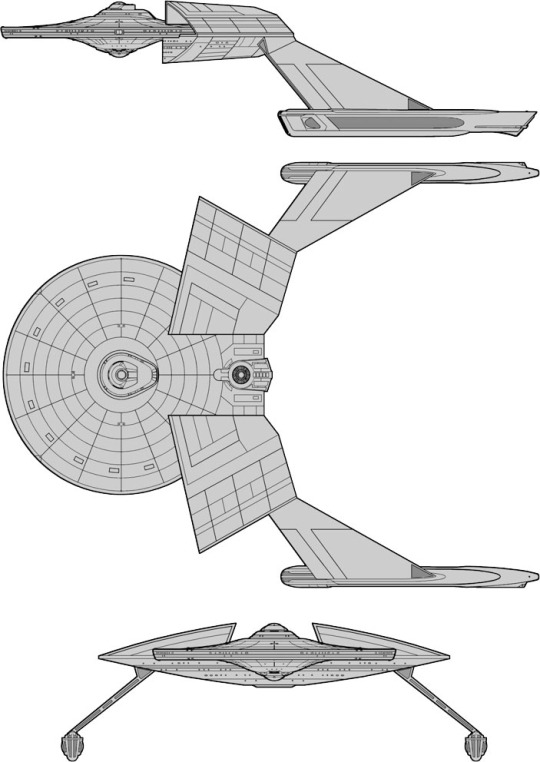
Speaking of troop transports, The Chandley is perhaps Fasa’s most popular ship, and its not hard to see why. Maybe Sto, could give her a boarding console.
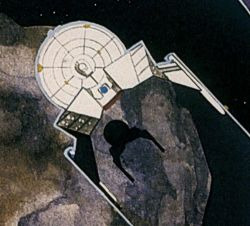
11.Saladin/Hermes

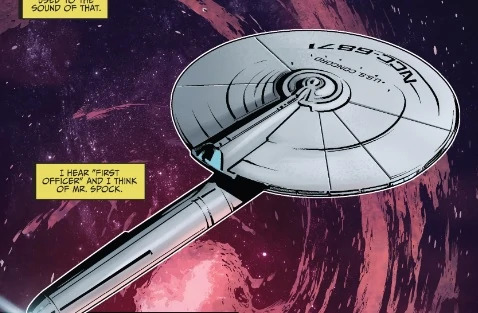
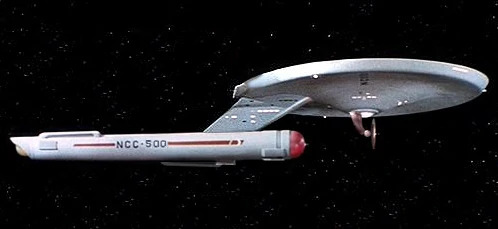
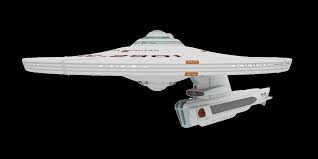
Orginally appearing in the Star Fleet Technical Manual by Franz Joseph, this ship has TOS and TMP varaints, as well as a Kelving timeline version from both the comics and Star Trek Fleet Command. Simple yet iconic, with so many flavors. Legendary Discovery Variant?
12.Insignia Class
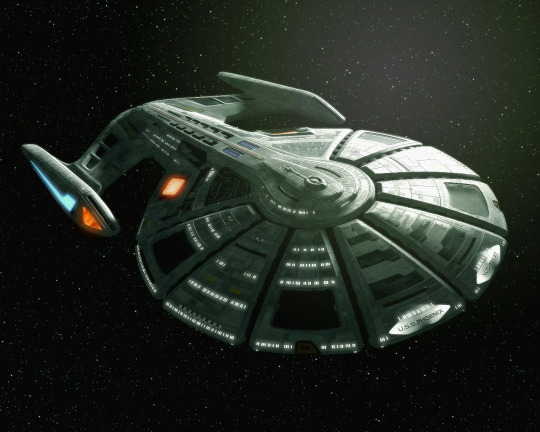
This gorgeous ship originally was a fan design, then was included in the Ships of the Line calender. It later appeared in the TNG Waypoint comics as the ‘Chimer’ class...USS ENTERPRISE???
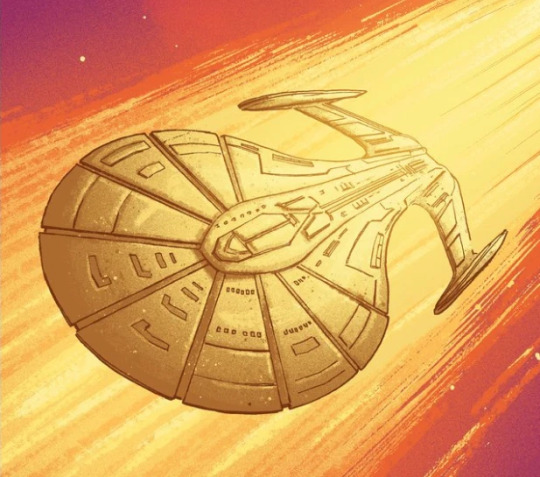
This version of the Enterprise served at the same time as the Enteprise E (ummmm?) and was commanded by Geordi La Forge.
The Chimer name sucks though. Insignia class is a way better name.
Honorable Mention:
Locknar class

Another Fasa Ship, this is an honorable mention bc it is kinda...maybe...canon?
In Lower Decks we she the USS Titan’s lineage wall...including what was confirmed to be a Locknar class USS Titan?

Yes I am a TOS/TMP nerd, how can you tell?
5 notes
·
View notes
Text
*cough cough* archive.org *cough* Star Trek Star Fleet Technical Manual by Frank Joseph ; Ballantine Books *cough*


YALLLLLL
18 notes
·
View notes
Photo

It took a whole lot of digging, but I finally found it!!!!!
For those of you too young to understand, this was the Holy Grail/Bible for Trekkers back in the dark days between the end of The Original Series and Star Trek: The Motion Picture.
#Star Trek: The Original Series#Star Fleet Technical Manual#Franz Joseph#digging through my storage unit
6 notes
·
View notes
Photo

Franz Joseph, Star Trek Star Fleet Technical Manual (Ballantine Books, 1975).
1K notes
·
View notes
Photo

Star Fleet Dreadnought, as per Star Fleet Technical Manual by Franz Joseph Schnaubel
118 notes
·
View notes